Allamanda, the Golden Trumpet
Even though it doesn’t hold very well to the cold, allamanda is a plant that perfectly decorates Mediterranean-type gardens.
A summary of Allamanda facts
Name – Allamanda cathartica
Family – Apocynaceae
Type – climbing vine
Exposure – full sun
Soil – rather light
Foliage – evergreen
Flowering – July to November
It bestows us with sumptuous yellow blooming all summer long.
How to plant allamanda
The planting of an allamanda is an important step, even though it cannot be planted outdoors everywhere. Planting in a pot is an option in some cases.
Allamanda directly in the ground
Allamanda can survive outdoors year-round only in mild-wintered areas. It cannot withstand temperatures below freezing.
If you live in mild climates, plant it in spring in light soil.
- It needs a lot of sun to develop well.
- It loves soil that drains particularly well. It’ll thus feel right at home with a mix of one part garden soil, one part soil mix and one part sand.
- Allamanda must be planted in a warm spot and should be brought indoors in winter if temperatures drop below 40°F (5°C).
- Choose a place that is sheltered from wind and preferably along a lattice that it can climb along.
Indeed, wind tends to dry plants out, and Allamanda is vulnerable to air that is too dry.
Additionally, as a precaution against transplant shock, cover it with a shade veil for 2-3 weeks just after planting, if the weather is very hot. Later on, this isn’t necessary.
Planting allamanda in pots
Growing allamanda in pots is recommended everywhere temperatures drop below 40°F (5°C) during winter.
To winterize your allamanda, simply bring your potted vine in a well-lit place where it doesn’t freeze over winter.
- Good examples of this are a garden shed, garage or basement (near a window!), a non-heated greenhouse, or a lean-in that doesn’t get too warm.
You can prune it beforehand to make it easier to handle and move around. As you’ll see right below, Allamanda will survive all the pruning woes you subject it to, so don’t hold back!
Pruning allamanda
Allamanda takes pruning well, it even helps it grow stronger.
Indeed, this is a vigorous climbing vine we’re dealing with, sometimes even invasive. Pruning it is the way to set boundaries to its growth.
- Pruning doesn’t impact the blooming, nor does it slow the allamanda’s growth.
- Severe pruning can also be performed several times a year, or once every couple years.
- Pruning before spring growth renews is best, at the end of winter.
Caring for your allamanda
Allamanda is an easy plant to grow when in the proper environment.
- It is a plant that abhors shade, and needs as much sun as it can get to bloom.
Watering allamanda
Allamanda cherishes moisture and needs watering in case of heat waves. But don’t forget that the root area must drain well or the roots will rot!
The allamanda vine has particularly high water needs during the 1st year after planting.
- Water preferably in the evening. If you can water twice a day, dawn and dusk is ideal.
- Best use rain water because allamanda is sensitive to calcium-loaded water.
- Regularly spraying the leaves with soft water helps keep the high moisture levels it needs.
- Add flower plant fertilizer once or twice a month, especially for allamanda grown in pots.
- In winter, reduce watering as much as you can. About once a month is enough.
In particularly dry areas, find ways to increase air moisture in the vicinity of the plant. A nearby fountain or bird bath could do the trick outdoors.
Diseases and parasites that frequently attack allamanda
Allamanda is a plant that resists most parasites and diseases.
If leaves turn brown and curl, most probably aphids are colonizing the plant.
This vine is also vulnerable to red spider mite attacks.
Luckily, it’s also a favorite of pollinators, attracting bees, butterflies and even birds to the garden.
All there is to know about the allamanda
Also called golden trumpet, allamanda grows fast and offers spectacular blooming in summer.
It illuminates the garden with its bright yellow flowers.
- Another species, Allamanda blanchetti, produces pastel purple flowers
When placed in full sun, for instance on the edge of a deck, it spreads a delicate fruity fragrance.
- Read also on the topic of climbing plants: Fragrant climbing plants
All the parts of the plant induce skin photosensitivity. This means they make skin more vulnerable to irritation due to ultra-violet rays. Handle it with gloves to avoid this toxicity.
Furthermore, ingesting the plant causes nausea and vomiting.
Landscaping with allamanda
Allamanda is most wonderful when permitted to climb up and around arbors and fences. Nonetheless, even simply to decorate a mound of dirt, the golden trumpet vine produces beautiful results. Judge for yourself, here with a beautiful red Dracaena marginata!

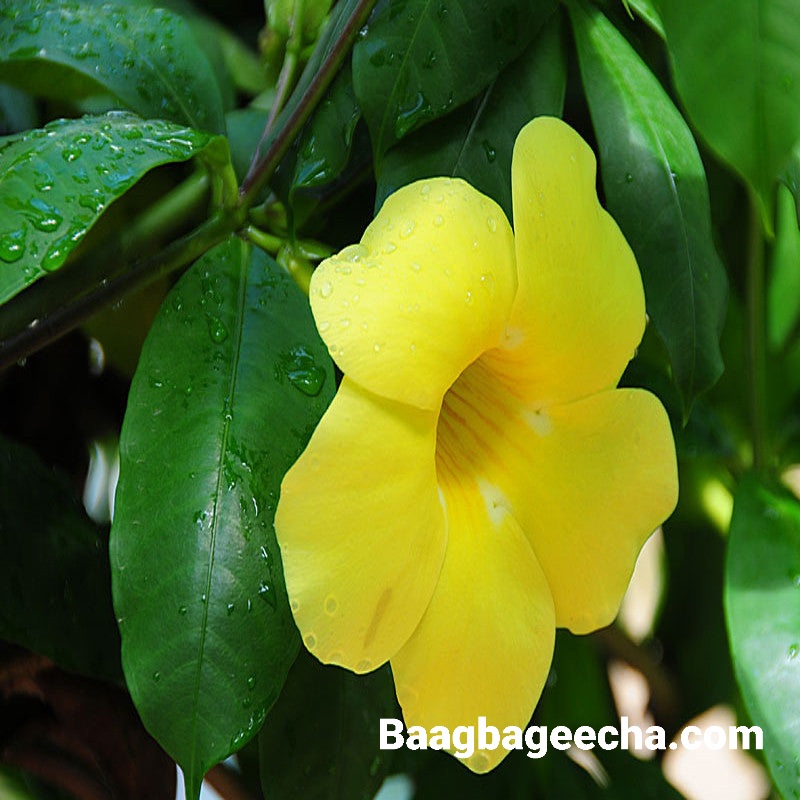
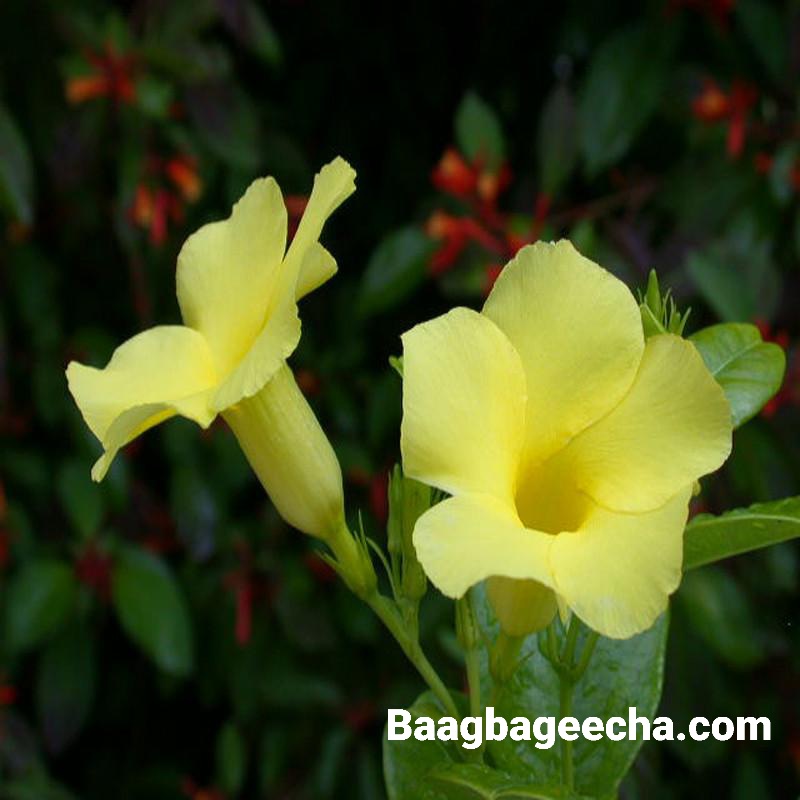



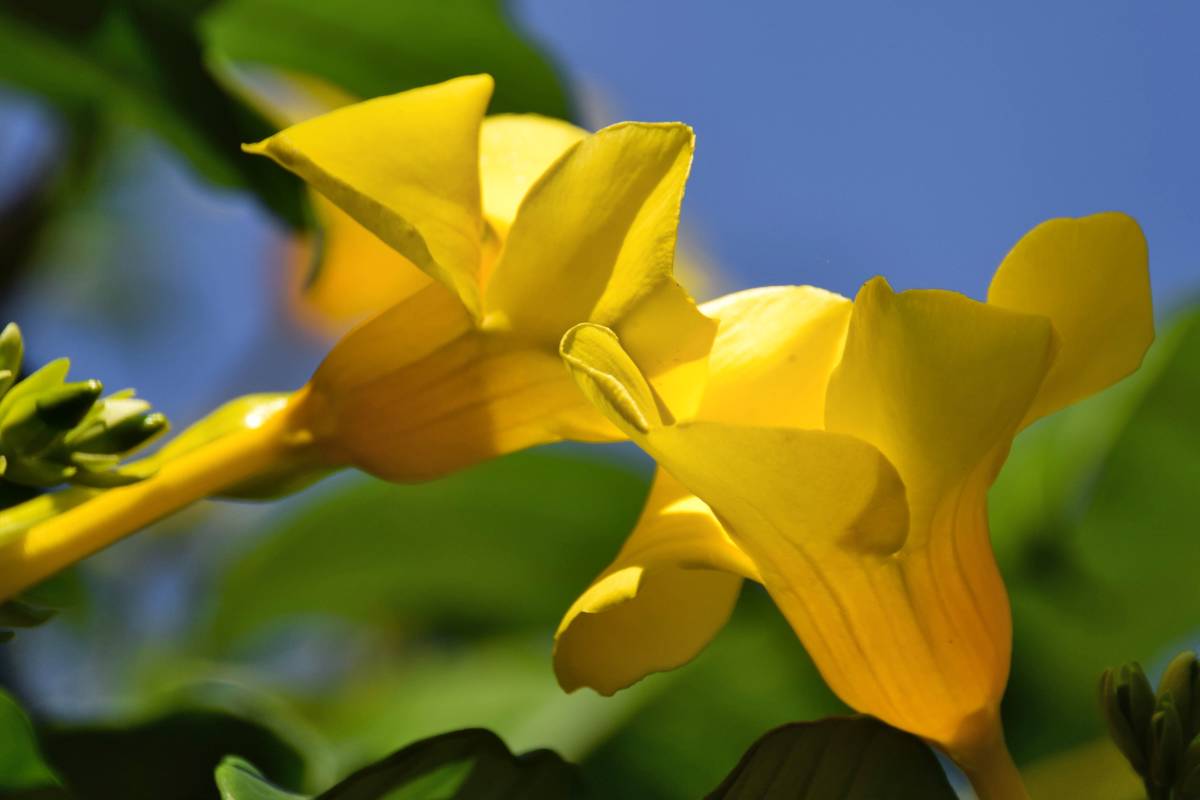
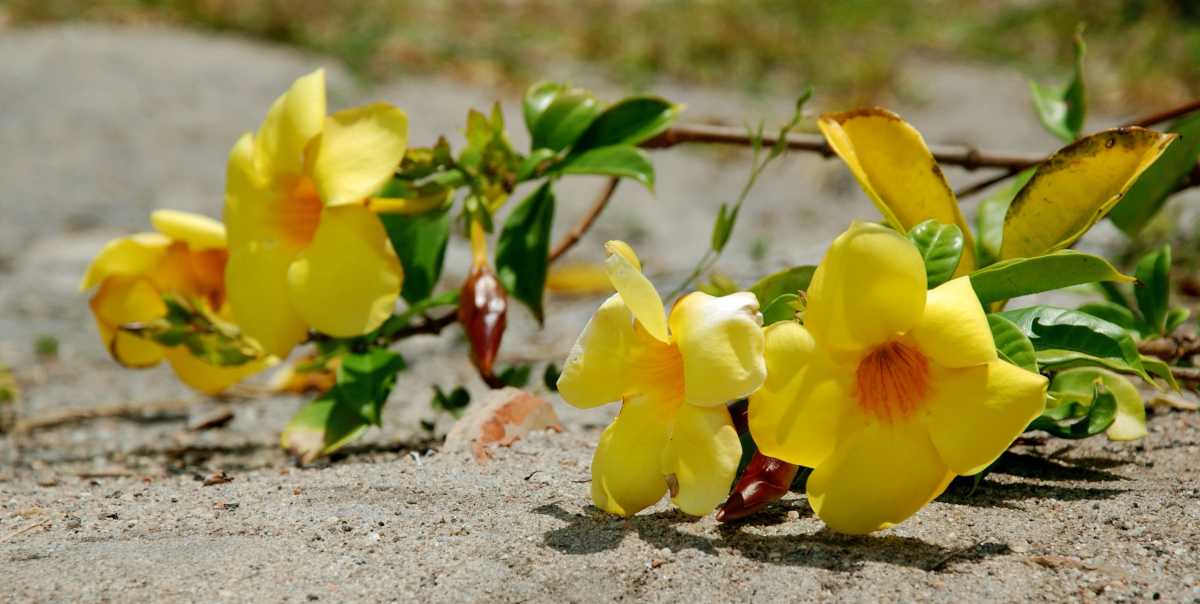
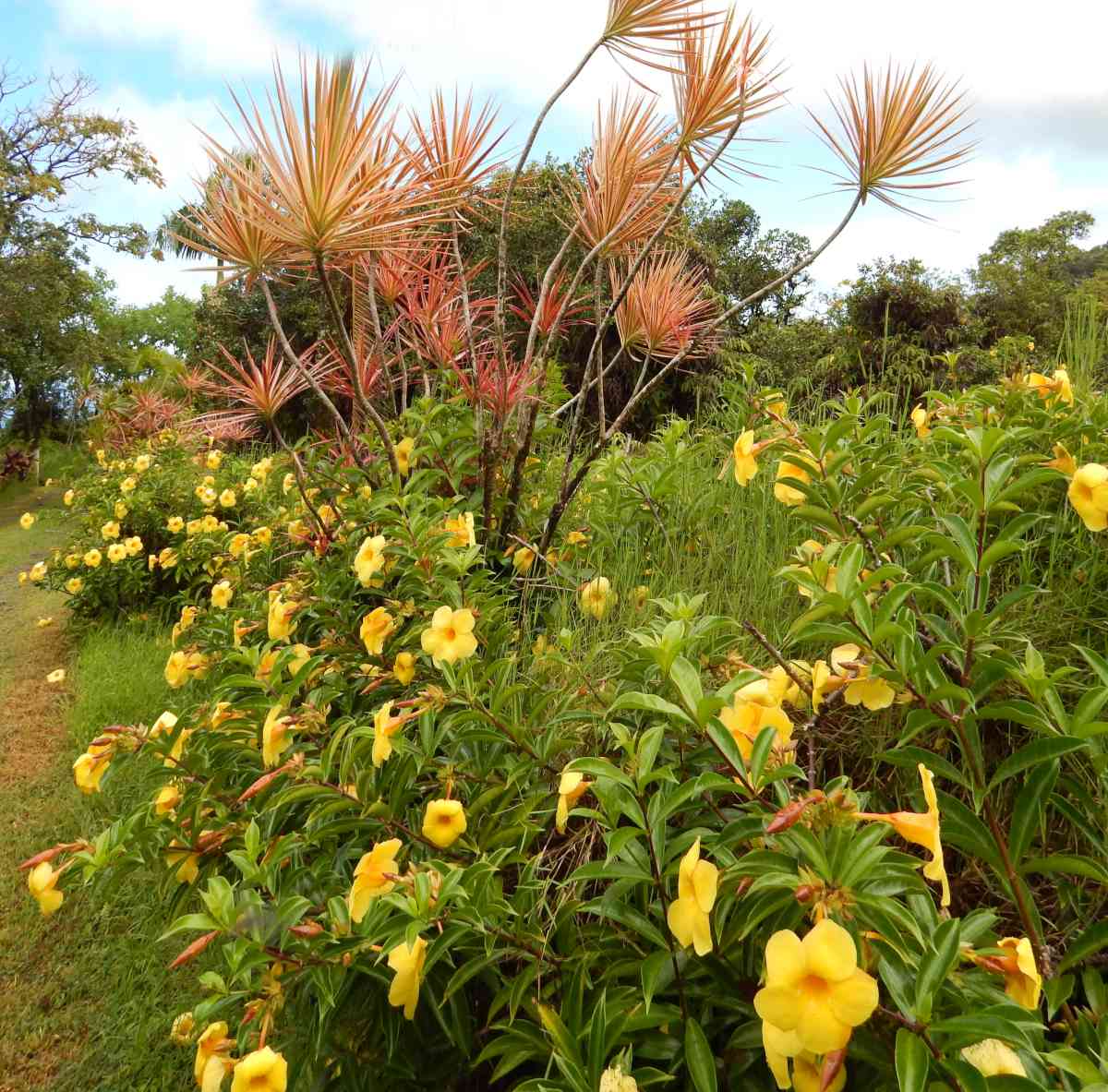

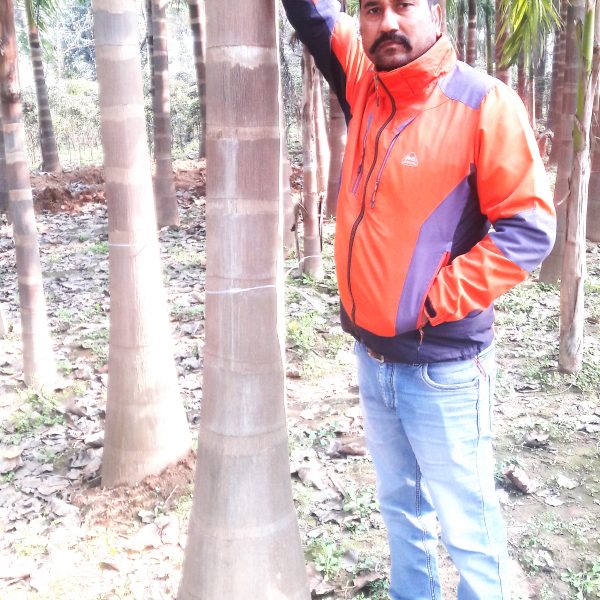
Reviews
There are no reviews yet.